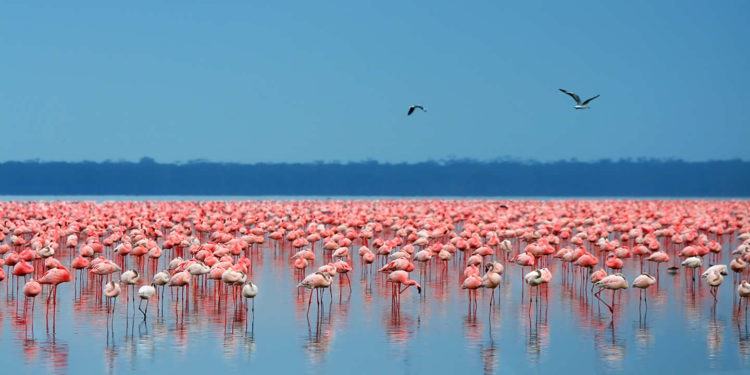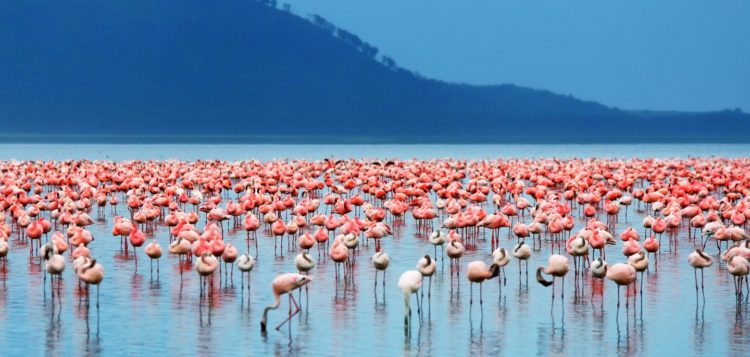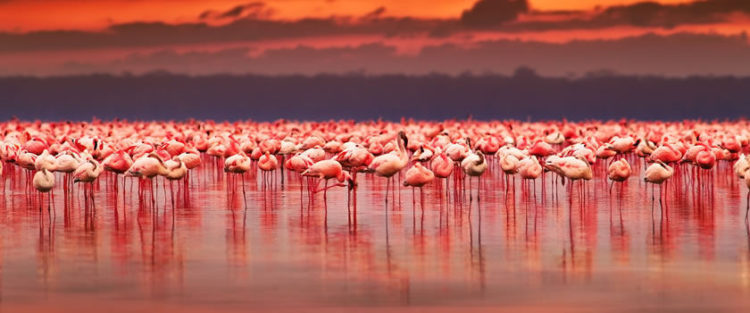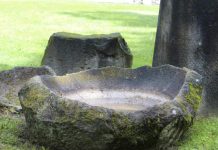Lake Nakuru is one of the Rift Valley soda lakes at an elevation of 1754 m above sea level. It lies to the south of Nakuru, in the rift valley of Kenya. The surface of the shallow lake of Nakuru is almost unequivocally pink. The lake’s abundance of algae used to attract a massive myriad quantity of flamingos that famously lined the shore. The Lake Nakuru is widely regarded as the greatest bird spectacle on earth, millions of millions of flamingos gathered here to seek food, feed on the abundant blue-green algae which thrive in the warm alkaline waters, with their high soda content caused by intense evaporation in the burning African sun. The countless flamingoes on the lake Nakuru are varying depending on the water and food conditions and the best vantage point is from Baboon Cliff. Researchers believe that the countless flamingo population at Nakuru can consume as much as 500 tons of algae every day.
Lake Nakuru National Park is 188 km2, created in 1961 around Lake Nakuru, is mainly famous for its thousands, sometimes millions of flamingos nesting along the shores, however, around the lake fenced off as a sanctuary to protect giraffes, black and white rhinos, warthogs, baboons, and other large mammals. There are two types of flamingo species; the lesser flamingo can be illustrious by its deep red carmine bill and pink plumage unlike the greater, which has a bill with a black tip. In 1961, the Lake Nakuru National Park was created around the lake to protect this spectacle. Yet, conservationists are increasingly concerned that pollution from local industries could be causing the flamingo population at Lake Nakuru to fall. Nakuru means “Dust or Dusty Place” in the Maasai language, and the lake is famous for its surrounding mountainous vicinity but has since been extended to include a large part of the savannahs.
The flamingoes naturally feed with their long necks bent down and their bills upside down in the water, using their tongues to pump in and out to suck in the salty, alkaline water and mud. Filters in the bill catch the microscopic algae floating in the water, as well as the small shrimps which give them their pink color. Moreover, the park also has large-sized pythons that inhabit the dense woodlands, and can often be seen crossing the roads or dangling from trees. The huge amount of flamingos has been declining recently, maybe due to too much tourism, pollution resulting from industries waterworks nearby who dump waste into the waters, or simply because of changes in water quality which makes the lake temporarily inhospitable. Typically, the lake recedes during the dry season and floods during the wet season.





















